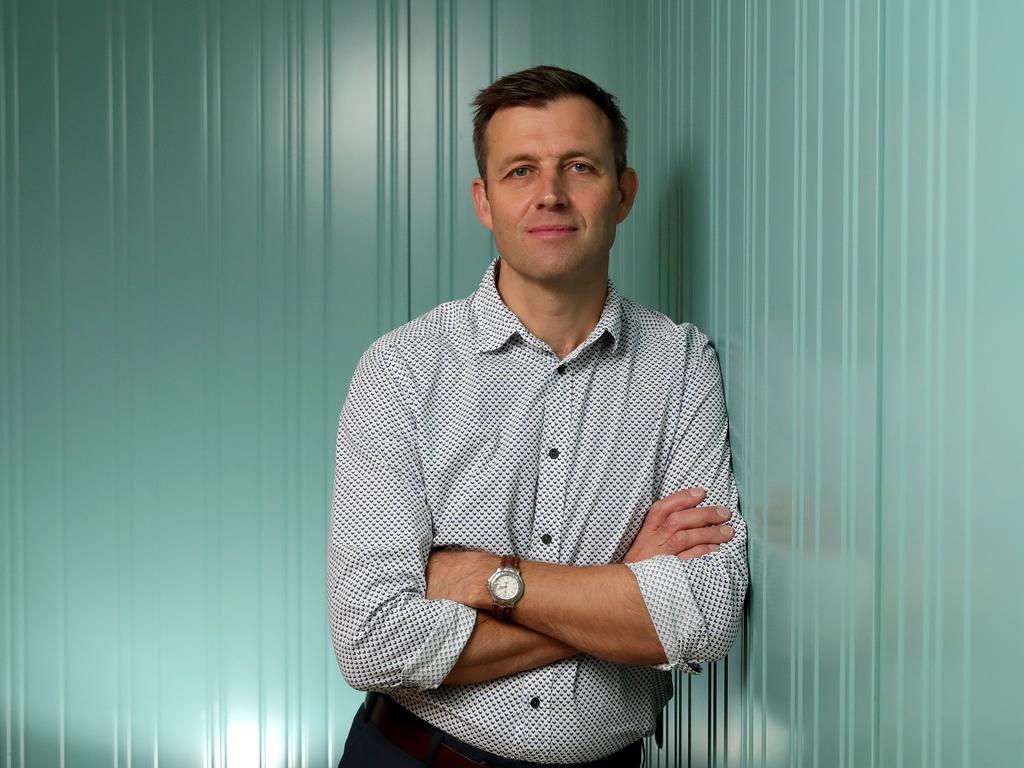Afterpay duo Nick Molnar and Anthony Eisen lead billionaire charge as disrupter fortunes surge
Such is the rise in of Aussie buy now, pay later sensation Afterpay that its co-founders were worth more than $3bn each this week. But critics have their doubts.

Such is the rise in the share price — and popularity — of Aussie buy now, pay later sensation Afterpay that its co-founders Nick Molnar and Anthony Eisen were briefly worth more than $3bn each on Friday morning.
Afterpay smashed through many barriers this week, at one stage having a market capitalisation higher than the venerable Telstra, and when its shares hit $150 on Friday, Molnar and Eisen were suddenly among the 30 wealthiest Australians.
At that level it puts them close to names such as James Packer and David Hains, and above business veterans such as Gerry Harvey and Nick Politis on The List — Australia’s Richest 250, published by The Australian annually.
It has all happened so quickly for the company founded by Molnar — already the country’s youngest billionaire at 29 — and Eisen in 2014, and while some observers have revelled in Afterpay’s success there have also been critics questioning the company’s valuation and lack of profits so far.
Seek co-founder Paul Bassat, a respected name in Australian business with a technology success story under his own belt and investments in several others through his Square Peg Capital, was one to notice some of the negative sentiment.
“Most of the coverage of Afterpay is about their share price (mostly negative but some glowing). It completely misses the point,” he tweeted.
“It is a five-year-old rocket ship that is transforming consumer behaviour and retail. (Australia) needs to produce a new Canva or Atlassian or Afterpay every year.”
Bassat seems to suggest that there is plenty of growth left in Afterpay yet, even if it has almost trebled in value in the last 12 months alone, adding more than $2bn to Molnar and Eisen’s paper wealth.
Other companies Bassat listed have also disrupted and changed the face of their respective industries, and whether by accident or design, have also greatly increased in value in that time — and seen the wealth of their founders skyrocket.
The privately held Canva, co-founded by thirty-something tech sensations Melanie Perkins and Cliff Obrecht, was valued at $US6bn after a $US60m capital raising last June, making the 32-year-old the third-richest woman in Australia.
There are plenty of disrupters on The List that are publicly traded and have enjoyed similar rises in fortune in the past 12 months, even with the big dip in the markets that came when the COVID-19 pandemic swept the world last March.
Billionaire Andrew Forrest has increased his wealth the most, adding more than $13bn to his paper fortune since January last year as shares in his Fortescue Metals Group have surged along with demand for iron ore.
Forrest had already disrupted the mining sector in the past 15 years, building up Fortescue to such an extent that it has surpassed Rio Tinto’s locally listed stock in market capitalisation.
Now his sights are set further afield: he wants Fortescue to become one of the world’s largest renewable energy production companies.
He will back a pilot plan to produce so-called “green steel”, citing its potential to create an industry using Australian iron ore to make steel using green energy.
Meanwhile, Atlassian co-founders Scott Farquhar and Mike Cannon-Brookes have each added almost $8bn to their paper wealth in a year as shares in their Nasdaq-listed software group Atlassian surged.
Its unique collaborative software has gained even more popularity with more people working at home during the pandemic.
Netwealth father and son duo Michael and Matt Heine have seen shares in their superannuation and wealth management platform Netwealth increase by more than $1bn.
It has had record inflows of funds to its platform as market activity increases and big banks shy away from wealth management.
Then there is Larry Diamond and Zip Co, another in the fintech space. It surged in value this week as co-founder Peter Gray said: “We can evolve and disrupt the market for the next 10 years.”
It appears there is a long way to go for Zip Co and the other big disrupters.








To join the conversation, please log in. Don't have an account? Register
Join the conversation, you are commenting as Logout